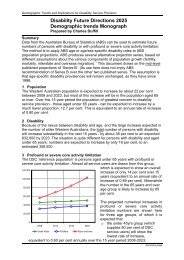Access Resource Kit (ARK) - Disability Services Commission
Access Resource Kit (ARK) - Disability Services Commission
Access Resource Kit (ARK) - Disability Services Commission
You also want an ePaper? Increase the reach of your titles
YUMPU automatically turns print PDFs into web optimized ePapers that Google loves.
DESIGNING FOR ACCESS<br />
Designing <strong>Access</strong> for People of all Ages and Abilities<br />
The following section highlights design implications for access. There are many different<br />
types of disabilities, but there are implications for service planners and providers in three<br />
major areas of disability:<br />
• physical, including people who use wheelchairs, people who have difficulty walking<br />
and people who have difficulty with finger or hand control;<br />
• sensory (vision, hearing); and<br />
• people with disabilities that affect communication and thought processes.<br />
People with Physical Disabilities<br />
People who use wheelchairs.<br />
Although the number of people who use wheelchairs is small compared with other physical<br />
disability groups, the implications for designers are, in many ways, the greatest. If<br />
designers of facilities intended for use by the general public consider the needs of a<br />
person who uses a wheelchair, then the vast majority of people (including people with<br />
prams, goods, or shopping trolleys) will also benefit.<br />
Design considerations for people who use wheelchairs include:<br />
• avoidance of abrupt vertical changes of level (kerbs, steps, ruts, gutters etc.) to<br />
ensure a continuous accessible path of travel;<br />
• avoidance of excessive slope (camber) across the direction of travel on a footpath<br />
which makes control of the wheelchair difficult;<br />
• provision of adequate forward reach and available clearance under basins, tables<br />
and benches to allow access for the person in the wheelchair as well as their<br />
wheelchair footrests and front wheels;<br />
• provision of adequate space into doorways and within rooms to allow for wheelchair<br />
dimensions and turning circles; and<br />
• avoidance of surface finishes which hamper wheelchair mobility (eg. gravel, grass or<br />
deep-pile carpet) and surfaces that do not provide sufficient traction (eg. polished<br />
surfaces).<br />
People who experience difficulty walking.<br />
People who experience difficulty walking may have disabilities which arise from medical<br />
conditions including stroke, lower limb amputation, cerebral palsy, Parkinson’s disease<br />
and arthritis.<br />
People with Disabilities and Planning for <strong>Access</strong> (Aust Standards updated February 2011)1.9




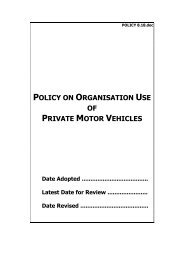



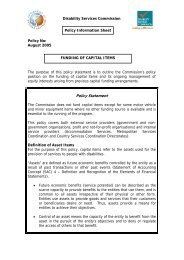
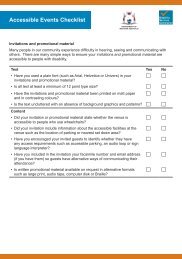
![Heerarka Adeegyada Naafada [PDF 102 kB] - Disability Services ...](https://img.yumpu.com/22096139/1/184x260/heerarka-adeegyada-naafada-pdf-102-kb-disability-services-.jpg?quality=85)
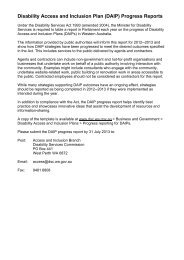



![معايير خدمات الإعاقة [PDF 297 kB] - Disability Services Commission](https://img.yumpu.com/22096120/1/184x260/-pdf-297-kb-disability-services-commission.jpg?quality=85)
